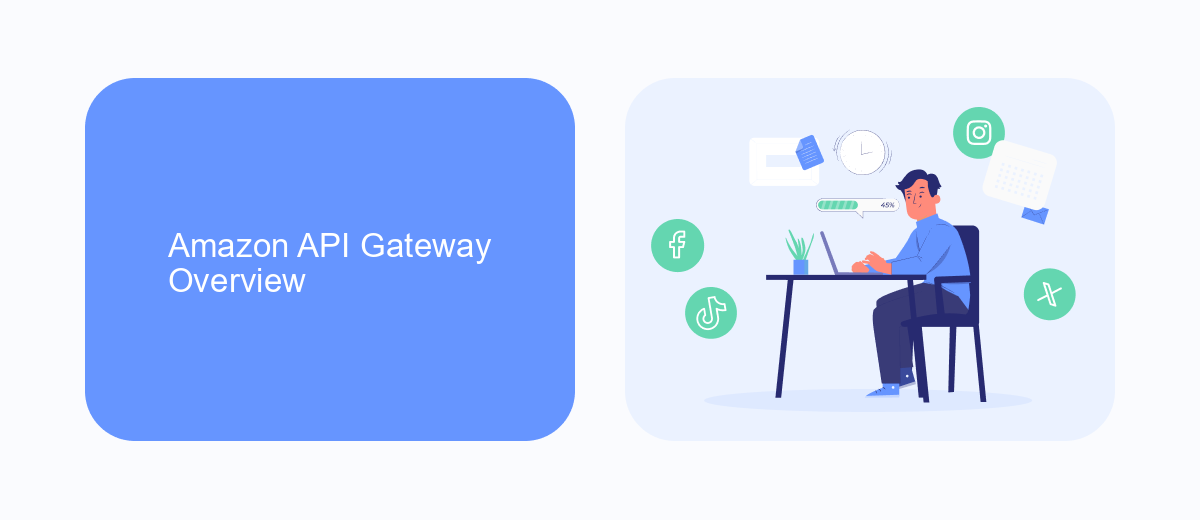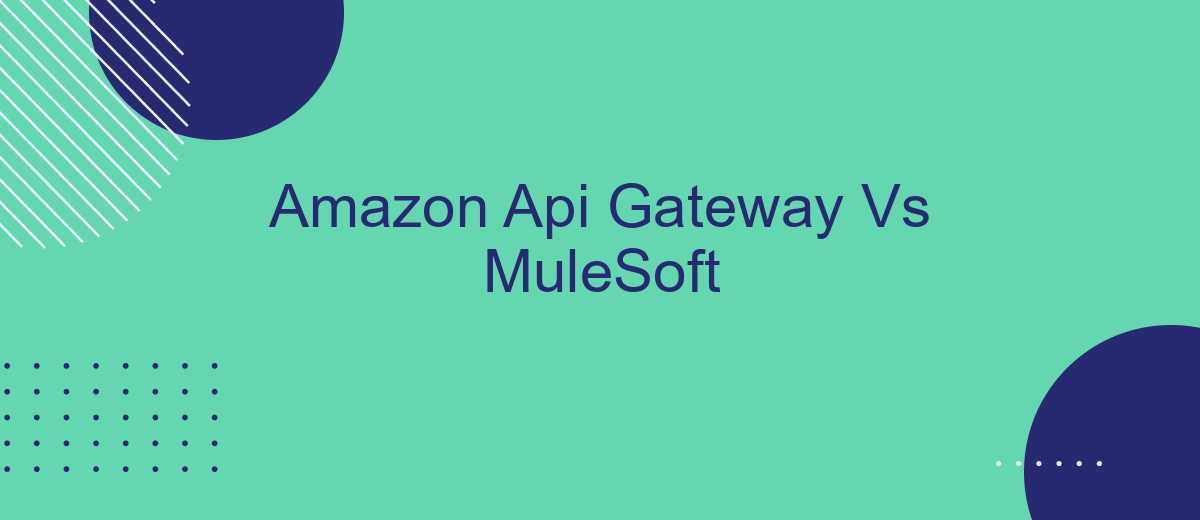In the ever-evolving landscape of API management, choosing the right platform is crucial for seamless integration and efficient operations. This article delves into a comparative analysis of Amazon API Gateway and MuleSoft, two leading solutions in the market. By examining their features, scalability, and ease of use, we aim to provide valuable insights to help you make an informed decision.
Introduction
In the rapidly evolving landscape of digital transformation, businesses are constantly seeking efficient ways to integrate various systems and applications. Two prominent tools that facilitate this integration are Amazon API Gateway and MuleSoft. Both offer robust solutions for creating, deploying, and managing APIs, but they cater to different needs and use cases.
- Amazon API Gateway: A fully managed service that makes it easy for developers to create, publish, maintain, monitor, and secure APIs at any scale.
- MuleSoft: An integration platform that provides tools for designing, building, and managing APIs, as well as connecting various applications, data, and devices.
While Amazon API Gateway is ideal for those deeply embedded in the AWS ecosystem, MuleSoft offers a more comprehensive suite for integrating a wide range of services. Tools like SaveMyLeads can further simplify the integration process by automating the connection between various applications and data sources, ensuring seamless data flow and operational efficiency.
Amazon API Gateway Overview

Amazon API Gateway is a fully managed service that makes it easy for developers to create, publish, maintain, monitor, and secure APIs at any scale. It acts as a "front door" for applications to access data, business logic, or functionality from backend services, such as workloads running on Amazon EC2, code running on AWS Lambda, or any web application. With API Gateway, you can create RESTful APIs and WebSocket APIs that enable real-time two-way communication applications.
One of the key advantages of Amazon API Gateway is its seamless integration with other AWS services, ensuring robust security, scalability, and monitoring capabilities. For businesses looking to automate their workflows and streamline integrations, services like SaveMyLeads can be incredibly useful. SaveMyLeads allows for easy setup of integrations between various platforms, ensuring that data flows smoothly across your systems, enhancing the overall efficiency of your API management strategy.
MuleSoft Overview

MuleSoft is a widely recognized integration platform that enables organizations to connect applications, data, and devices with ease. It provides a robust set of tools and services to facilitate seamless integration across various systems, whether they are on-premises or in the cloud. With MuleSoft, businesses can streamline their operations, enhance productivity, and achieve greater agility in their digital transformation efforts.
- API-led Connectivity: MuleSoft's approach to integration is centered around APIs, promoting reusability and modularity.
- Anypoint Platform: A unified platform that offers design, deployment, and management tools for APIs and integrations.
- Pre-built Connectors: MuleSoft provides a wide range of pre-built connectors for popular applications and services, reducing development time.
- Data Transformation: Advanced data mapping and transformation capabilities to ensure compatibility between different systems.
- SaveMyLeads Integration: MuleSoft supports integration with services like SaveMyLeads, allowing businesses to automate lead management and improve sales processes.
Overall, MuleSoft stands out as a comprehensive solution for enterprises looking to modernize their IT infrastructure and improve connectivity across their ecosystem. Its emphasis on API-led connectivity and extensive toolset make it a preferred choice for many organizations. Whether you need to integrate legacy systems or adopt new cloud-based applications, MuleSoft provides the flexibility and scalability required for today's dynamic business environment.
Comparison

When comparing Amazon API Gateway and MuleSoft, it is essential to consider their core functionalities and target user bases. Amazon API Gateway is a fully managed service that makes it easy for developers to create, publish, maintain, monitor, and secure APIs at any scale. It is tightly integrated with other AWS services, making it a go-to choice for users already within the AWS ecosystem.
On the other hand, MuleSoft offers a more comprehensive integration platform known as Anypoint Platform. MuleSoft is designed to connect applications, data, and devices with APIs, providing a more extensive suite of tools for enterprise-level integration needs. Its robust capabilities make it suitable for complex, large-scale integration projects.
- Ease of Use: Amazon API Gateway is user-friendly for those familiar with AWS, while MuleSoft offers a more intricate setup that can handle complex integrations.
- Scalability: Both platforms offer high scalability, but Amazon API Gateway is optimized for seamless scaling within AWS.
- Integration Capabilities: MuleSoft provides a broader range of integration tools, including connectors and templates, making it ideal for diverse environments.
- Cost: Amazon API Gateway can be more cost-effective for simpler use cases, whereas MuleSoft may require a higher investment for its extensive features.
For businesses looking for a straightforward API management solution within AWS, Amazon API Gateway is an excellent choice. However, for those needing a more comprehensive integration platform, MuleSoft offers advanced capabilities. Additionally, integration services like SaveMyLeads can further simplify the process of connecting various applications and automating workflows.
Conclusion
In conclusion, both Amazon API Gateway and MuleSoft offer robust solutions for managing APIs, but they cater to different needs and use cases. Amazon API Gateway excels in providing a highly scalable and cost-effective option, particularly for businesses already integrated into the AWS ecosystem. Its seamless integration with other AWS services makes it an attractive choice for enterprises looking for a comprehensive cloud solution.
On the other hand, MuleSoft stands out with its extensive capabilities in connecting disparate systems and applications, making it ideal for organizations requiring complex integrations. Its powerful data transformation and orchestration features, combined with a user-friendly interface, make it a preferred choice for businesses aiming for agility and speed in their integration processes. For those looking to further simplify and automate their integration workflows, services like SaveMyLeads can be invaluable, offering pre-built connectors and automated data transfer capabilities. Ultimately, the choice between Amazon API Gateway and MuleSoft should be guided by your specific business requirements and existing technological infrastructure.


FAQ
What are the primary differences between Amazon API Gateway and MuleSoft?
Which one is better for handling large-scale API traffic?
Can both Amazon API Gateway and MuleSoft be used together?
What are the cost implications of using Amazon API Gateway vs. MuleSoft?
Are there any tools to simplify the integration and automation of these platforms?
Don't waste another minute manually transferring leads from Facebook to other systems. SaveMyLeads is a simple and effective tool that will allow you to automate this process so that you don't have to spend time on the routine. Try SaveMyLeads features, make sure that this tool will relieve your employees and after 5 minutes of settings your business will start working faster.
